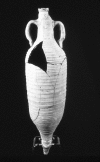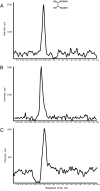Ancient Egyptian herbal wines
- PMID: 19365069
- PMCID: PMC2678600
- DOI: 10.1073/pnas.0811578106
Ancient Egyptian herbal wines
Abstract
Chemical analyses of ancient organics absorbed into pottery jars from the beginning of advanced ancient Egyptian culture, ca. 3150 B.C., and continuing for millennia have revealed that a range of natural products--specifically, herbs and tree resins--were dispensed by grape wine. These findings provide chemical evidence for ancient Egyptian organic medicinal remedies, previously only ambiguously documented in medical papyri dating back to ca. 1850 B.C. They illustrate how humans around the world, probably for millions of years, have exploited their natural environments for effective plant remedies, whose active compounds have recently begun to be isolated by modern analytical techniques.
Conflict of interest statement
The authors declare no conflict of interest.
Figures



References
-
- Johns T. With Bitter Herbs They Shall Eat It: Chemical Ecology and the Origins of Human Diet and Medicine. Tucson, AZ: Univ of Arizona Press; 1990.
-
- McGovern PE. Ancient Wine: The Search for the Origins of Viniculture. Princeton: Princeton Univ Press; 2007.
-
- Dudley R. Ethanol, fruit ripening, and the historical origins of human alcoholism in primate frugivory. Integr Comp Biol. 2004;44:315–323. - PubMed
-
- Dudley R. Evolutionary origins of human alcoholism in primate frugivory. Q Rev Biol. 2000;75:3–15. - PubMed
-
- Stephens D, Dudley R. The drunken monkey hypothesis. Nat Hist. 2004;113:40–44.
Publication types
MeSH terms
LinkOut - more resources
Full Text Sources

